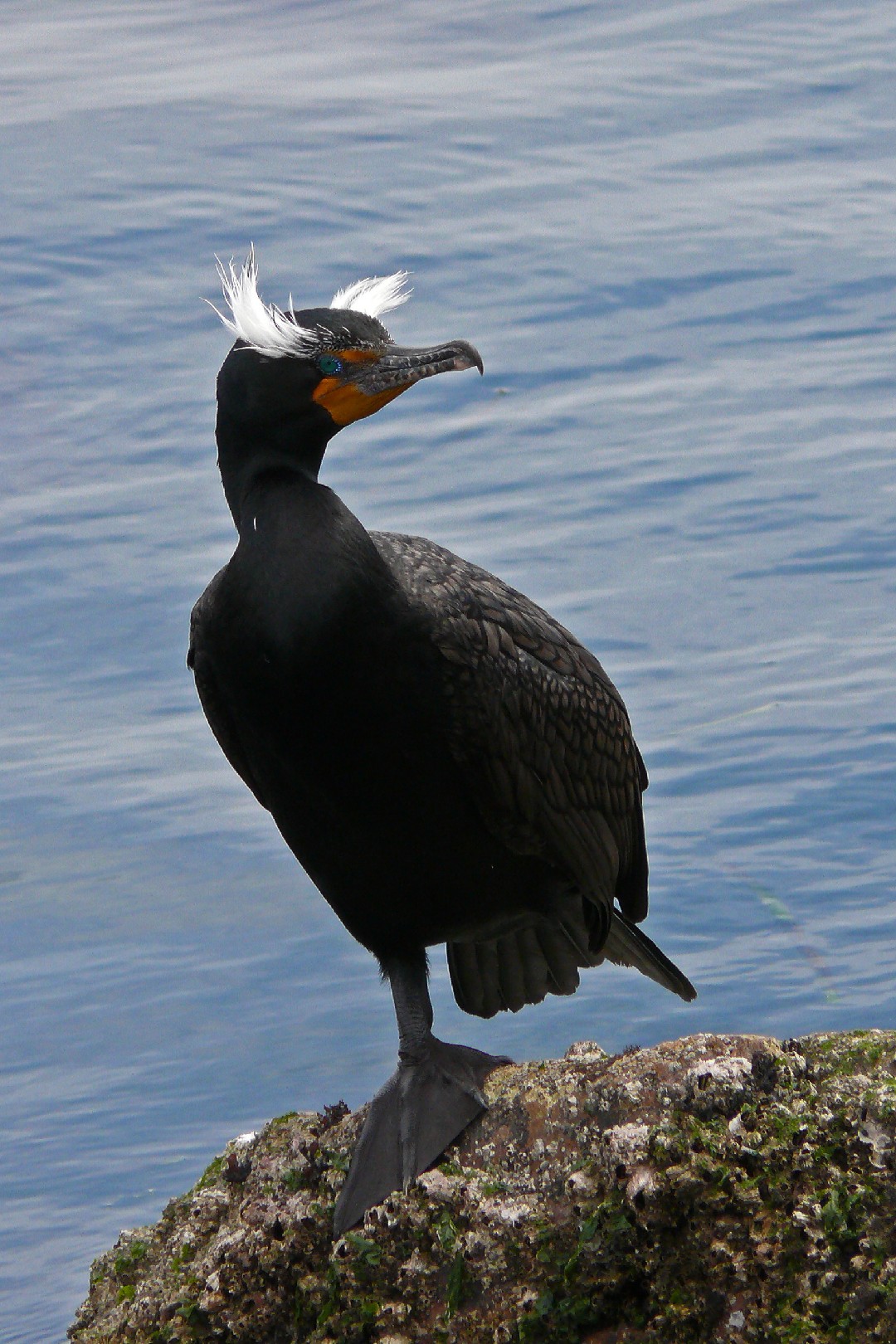Double-crested Cormorant
A species of Typical Cormorants and Shags Scientific name : Nannopterum auritum Genus : Typical Cormorants and Shags
Double-crested Cormorant, A species of Typical Cormorants and Shags
Botanical name: Nannopterum auritum
Genus: Typical Cormorants and Shags
Content
Description People often ask General Info
 Photo By Mike Baird from Morro Bay, USA , used under CC-BY-2.0 /Cropped and compressed from original
Photo By Mike Baird from Morro Bay, USA , used under CC-BY-2.0 /Cropped and compressed from original Description
This large, dinosaur-like bird is the most common form of cormorant. A frequent visitor to bodies of fresh water, look out for double-crested Cormorants at the water's edge when they “wing-spread”. They will stand with their wings opened wide and tilted towards the sun to dry their feathers, because they are not waterproof.
Size
70 - 90 cm
Life Expectancy
6-17 years
Nest Placement
Ground
Clutch Size
1 - 7 eggs
Incubation Period
1 - 2 broods
Number of Broods
25 - 28 days
Nestling Period
21 - 28 days
Feeding Habits
Double-crested Cormorant primarily consumes fish, supplementing with occasional insects, amphibians, and crustaceans. Double-crested Cormorant employs a dynamic hunting technique; it dives and propels itself underwater using webbed feet to chase prey. Its hooked bill aids in capturing fish. When eating crustaceans, it displays unique behaviors, like shaking off limbs and swallowing headfirst. Double-crested Cormorant hunts in various aquatic habitats and can significantly impact local aquaculture.
Habitat
Double-crested Cormorant are primarily found in a variety of aquatic environments including temperate coastal regions, saltwater, freshwater habitats like large lakes, ponds, rivers, and streams. They prefer environments with ample access to fishing grounds and suitable perching and nesting sites such as high, exposed spots to dry their feathers after swimming — like rocks or dead trees. They nest colonially in trees close to water but may resort to ground nesting if trees are destroyed, often due to the accumulation of their guano.
Nest Behavior
Double-crested Cormorant builds nests centrally in colonies, expanding outward. Both sexes contribute to building; males gather materials, females arrange them. Nest building can lead to material theft from unguarded neighboring nests. The species engages in nest construction, egg-laying, and offers parental care throughout the breeding season.
Nest Characteristics
Double-crested Cormorant typically nests in colonies with male selecting the site to attract a female. They use finger-size sticks, seaweed, and flotsam to construct nests, which are lined with grass. The nests measure 1.5 to 3 feet in diameter, and 4 to 17 inches in height, with ground nests being wider and tree nests having deeper interiors.
Dite type
Piscivorous
People often ask
General Info
Feeding Habits
Bird food type
Sounds
Call
Recording location: United States
Behavior
Double-crested Cormorant exhibit a lifestyle intricately tied to water, dividing their time between proficient fishing and extended resting periods often on bare branches or rocks, where they conspicuously spread their wings—a behavior aiding feather drying due to their atypical lack of waterproofing. These birds have a buoyancy that makes them appear low in the water, with pronounced necks when swimming. Preening behaviors before flight include neck stretching, and they display orange gular skin upon landing, coupled with a characteristic hop. Territorial disputes involve a vivid show of blue inner-mouth coloration, head-shaking, and hissing. Courtship is flamboyant; males emphasize crests, vibrant neck hues, and ocular intensity in a unique pose, accompanied by grunting and subtle wing gesticulations, culminating in a revealing gape to entice females.
Distribution Area
A very common and widespread species, it winters anywhere that is ice-free along both coasts, as far north as southern Alaska (on the west coast) and southern New England (on the east coast). It can be found as far south as Mexico and the Bahamas. It migrates from the coldest parts of its breeding range, such as eastern Canada, and has occurred in Europe as a very rare vagrant, for example in Great Britain, Ireland, and the Azores. 

 Photo By Mike Baird from Morro Bay, USA , used under CC-BY-2.0 /Cropped and compressed from original
Photo By Mike Baird from Morro Bay, USA , used under CC-BY-2.0 /Cropped and compressed from original Scientific Classification
Phylum
Chordates Class
Birds Order
Gannets and Relatives Family
Cormorants Species
Double-crested Cormorant